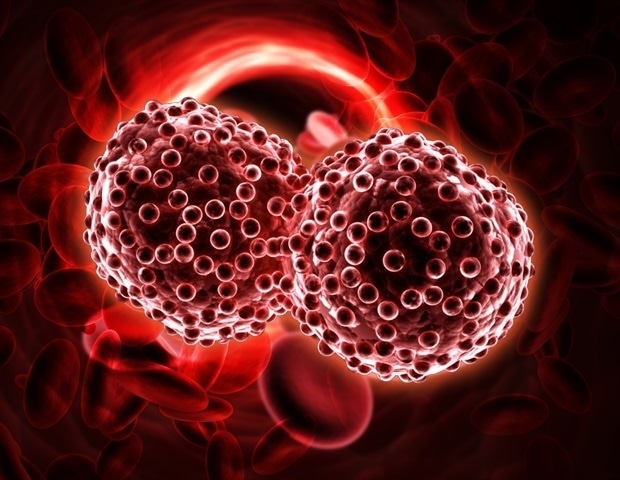The continuing coronavirus illness (2019) pandemic, brought on by the speedy outbreak of extreme acute respiratory syndrome coronavirus-2 (SARS-CoV-2), has claimed greater than 6.2 million lives globally. COVID-19 vaccination has diminished the mortality charge and hospitalizations due to SARS-CoV-2 an infection, nevertheless, due to the emergence of new variants of the virus, its effectiveness has decreased. Therefore, more practical therapeutics and prophylactics are wanted to fight COVID-19.
 Examine: Impact of cannabidiol on apoptosis and cellular interferon and interferon-stimulated gene responses to the SARS-CoV-2 genes ORF8, ORF10 and M protein. Picture Credit score: 271 EAK MOTO / Shutterstock
Examine: Impact of cannabidiol on apoptosis and cellular interferon and interferon-stimulated gene responses to the SARS-CoV-2 genes ORF8, ORF10 and M protein. Picture Credit score: 271 EAK MOTO / Shutterstock
Background
Scientists have noticed outstanding homology within the genomic sequences of SARS-CoV-2 and SARS-CoV-1. The similarity within the genomes has helped researchers determine proteins and perceive their perform in illness manifestation. Nevertheless, the SARS-CoV-2 gene encodes for a novel protein, open studying body 10 (ORF10), whose perform stays largely unknown. Scientists characterised this protein and located that ORF10 is related to the suppression of innate immunity. Earlier research revealed that ORF contained cytotoxic T lymphocyte epitopes.
Aside from ORF10, one other SARS-CoV-2 gene that isn’t properly understood is ORF8. A number of research have urged that ORF8 is related to evasion of host immune responses, initiation of endoplasmic reticulum stress, and improvement of cytokine storm by way of activation of the interleukin (IL)-17 pathway.
Sort I IFN (IFNα and IFNβ) are the cytokines produced on the early stage of the an infection and are concerned in recruiting immunocytes that may inhibit viral replication. Sort II IFN (IFNγ) prompts neutrophils and macrophages, which might suppress virus replication. Sort III IFN (IFNλ) stimulated genes (ISG) perform as a downstream effector to induce apoptosis. These genes belong to the two′-5′-oligoadenylate synthetase (OAS) household. Nevertheless, activation of this pathway is weak in SARS-CoV-2, in distinction to SARS-CoV-1 and Center East Respiratory Syndrome (MERS-CoV). A earlier research has indicated that activation of the OAS-RNase L pathway could possibly be an efficient pharmacological technique to suppress COVID-19 an infection.
A New Examine
A brand new research revealed within the journal Life Sciences has centered on inspecting the results of ORF8 and ORF10 genes and SARS-CoV-2 Membrane (M) protein on apoptosis. As well as, scientists additional investigated the function of the aforementioned genes and SARS-CoV-2 M protein within the expression of IFNs and activation of downstream effectors. Earlier research have proven that ORF8 and ORF10 genes can suppress Sort I and III IFN responses.
On this research, the authors have evaluated the expression of these genes alone in addition to together with cannabidiol (CBD). CBD is a serious non-psychotropic phytoconstituent remoted from Hashish sativa and has been hypothesized as a therapeutic candidate in opposition to SARS-CoV-2 an infection. Earlier research have revealed that CBD possesses anti-inflammatory properties and might shield cells from metabolic stress related to a viral an infection.
On this research, scientists transfected HEK293 cells with plasmids expressing the management vector, ORF8, ORF10, or M protein, and the markers of apoptosis have been decided after 24 hours. Moreover, researchers evaluated IFN and IFN stimulated gene expression after 14 hours, with or with out CBD. The authors additionally studied cells transfected with polyinosinic:polycytidylic acid (Poly (I:C)) as a normal mannequin of RNA viral an infection.
Key Findings
Within the current research, scientists noticed a dose-dependent lower within the quantity of cells per properly when cells transfected with plasmids expressing ORF8, ORF10, or M protein, have been handled with CBD. Nevertheless, related findings weren’t noticed within the absence of CBD remedy.
The authors reported that the expression of the SARS-CoV-2 genes ORF8, ORF10, and M protein alone couldn’t induce apoptosis. This discovering is in step with a earlier research that reported induction of apoptosis was absent in nasopharyngeal samples of COVID-19 sufferers. The present research confirmed that apoptosis was missing within the management group (with out CBD), in distinction, CBD augmented the induction of each early and late apoptosis within the handled group (with CBD). This discovering signifies that CBD can suppress viral an infection by selling the elimination of contaminated cells.
On this research, researchers hypothesized that enhanced induction of IFN and ISG could possibly be the rationale for augmented apoptosis within the handled group. This research reported that CBD regulates OAS household gene expression (OAS1, OAS2, OAS3, and OASL), which has been considered a robust mediator of virus-related apoptosis. The authors reported that CBD augments the cellular antiviral response to Poly (I:C).
Conclusion
The present research demonstrated that CBD enhances the antiviral innate immune response based mostly on three SARS-CoV-2 genes, i.e., ORF 8, ORF 10, and M protein. This research additionally acknowledged that CBD may prophylactically prime the innate antiviral response of cells to put together them for a greater antiviral response. The authors acknowledged that HEK293 cells alone weren’t absolutely ready to reply to SARS-CoV-2 genes; nevertheless, when primed with CBD, a superior immune response was noticed. This discovering implies that CBD could prime elements of the innate immune system and improve the preparedness of the cells to struggle RNA-type viral an infection with out activating apoptosis. Due to this fact, sooner or later, this compound could possibly be thought-about a possible therapeutic agent in opposition to SARS-CoV-2 an infection.
Journal reference:
- Fernandes, F.M. et al. (2022) Impact of cannabidiol on apoptosis and cellular interferon and interferon-stimulated gene responses to the SARS-CoV-2 genes ORF8, ORF10 and M protein. Life Sciences, 301, 120624. https://doi.org/10.1016/j.lfs.2022.120624, https://www.sciencedirect.com/science/article/pii/S0024320522003241?viapercent3Dihub







